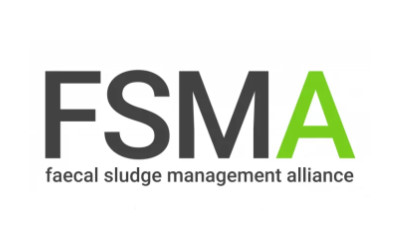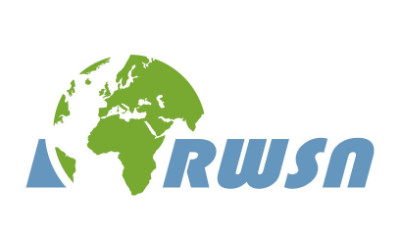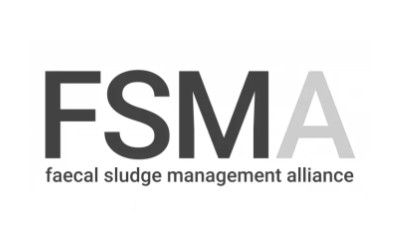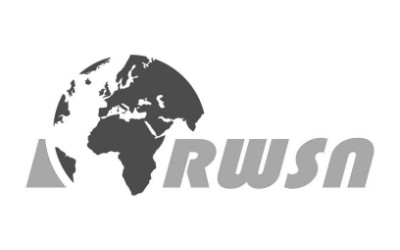Why is it important
 Selecting the right business models is key to ensuring the efficient functioning of public toilets in the long run. Design, construction or retrofitting, operations and management should be allotted to contractors according to their capacities. Public toilet management is often not a self-sustaining business model. The development of a robust business model that provides sufficient economic benefits is a prerequisite to attract private sector investment.
Selecting the right business models is key to ensuring the efficient functioning of public toilets in the long run. Design, construction or retrofitting, operations and management should be allotted to contractors according to their capacities. Public toilet management is often not a self-sustaining business model. The development of a robust business model that provides sufficient economic benefits is a prerequisite to attract private sector investment.

Contents
1. Identify engagement model: private or community
2. Select financing arrangement
How to go about it
The revenue and business models need to be carefully reviewed in the context of investments and expenses required to operate and manage the toilets vis-à-vis the revenue from user charges and advertising. A robust business model must be developed to attract the interest and participation of private enterprises or community organizations. It needs to be in line with the local conditions, requirements (i.e. type of toilets, footfall, etc.) and capabilities of the local actors, and safeguarded through effective contracts and financing agreements and monitoring systems.
The selection of the most suitable business model can be broken down into three main steps (Figure).

1. Identify engagement model: private or community
To ensure effective management, the municipality responsible often outsources part of the construction, operation and maintenance to the private sector or community. The engagement model (private management model or community managed model) depends on the type of toilet required (public or community toilet) as defined by the footfall and user type (catchment area). Planning and decision-making aspects include:
Define the toilet operational model
The operational model (at toilet level) can vary for each toilet based on the footfall (e.g. local vs. tourist, pattern of usage, location of toilet, etc.). In toilets of a similar footfall character, a well-defined operational model enables easier management. This increases the possibilities for clustering of toilets to achieve optimization and economics of scale. Whenever toilets of different footfall character are combined, multiple operational models are required making management and cost optimization (especially manpower) scattered and complex:
- High footfall toilets (mostly public toilets): All toilets should deploy full-time caretaker and maintenance staff to ensure cleanliness and for optimal revenue collection.
- Medium footfall toilets (mostly public toilets): Sharing of cleaning staff during non-peak hours can optimize cleaning cycles and revenue collection.
- Low footfall toilets (mostly community toilets): Caretakers during peak hours (mornings and evenings) as well as sharing and community involvement options should be considered.
2. Select financing arrangement
The municipality can use its own resources for the construction or retrofitting and only outsource operations and management. Alternatively the complete process can be outsourced, leveraging on the private sector’s resources. Additional funding for community toilets can be obtained through various government schemes. The following aspects need to be considered.

Ensuring the business case for private and community engagement – recovering Operation & Maintenance Expenses (OMEX)
Sources of revenue to cover costs and make marginal returns need to be attractive enough for the operator to bid for the project. The viability of the project depends on the selected (A) operational model, (B) user fee, (C) potential of advertising revenue and (D) support infrastructure. In case the operational model is not viable, external funding (grants) and cross-subsidizing should be considered. Contractual arrangements such as royalty fee, subsidy and contract period also influence the cost recovery.
Define service standards and type of contract
It is important to define service standards (against norms and service expectations) as well as the type of contract to guide the cost assessment, contracting and monitoring of service provision. The achievement of the performance standards is affected by the toilet’s operations and management (water and electricity supply, availability of consumables, cleanliness and condition). The municipality needs to ensure the availability and timely provision of support infrastructure (i.e. first priority or subsidized rates) and the use of quality construction material and availability of basic facilities.
Determine Capital Expenditure (CAPEX)
Capital Expenditure (CAPEX) is an important part of assessing internal or external funding options. The cost for construction includes costs for design, material and labour (Box). The inventory data should be used to determine investment requirements (e.g. installation, construction, major and minor renovation). The CAPEX and OMEX assessment should be reconfirmed and further elaborated after the toilet design selection as part of the Detailed Planning Report (DPR).

Assessing financial viability (cost elaboration)
The financial analysis at the city level becomes important when the revenue from footfalls (user fee) is not sufficient to cover the operating cost, investment and the municipality needs to provide additional funding support (i.e. grants, subsidies, advertisement rights, etc.). In general, toilets having higher footfalls will be able to cover the costs and earn a profit; toilets having medium footfalls will just break even; and toilets having low footfalls will require support from the municipality to ensure all toilets meet the prescribed service standards. Understanding the extent of capital support requires helps in estimating the funding gap – a prerequisite for financial sustainability. Funding can be obtained from internal (direct and indirect) and from external sources (box). Alternative sources and methods such as increasing cess on collection of MSW from commercial establishments, levy of taxes on tourists, etc. could also be explored.
Sensitivity analysis and de-risking to ensure project viability (scenario analysis)
A sensitivity analysis should be carried out to check the financial viability of public toilet operations under different conditions. For this purpose, sensitivity is tested across key parameters (e.g. assessment of capital and operating costs, revenue streams, concession periods and related shortfalls). The idea of this analysis is to simulate various real-life conditions to understand potential areas of failure and risks. Analysing the different scenarios becomes relevant when outsourcing part or all of the construction and operations. It ensures the PT project’s feasibility (internal rate of return and net present value) without compromising the service levels, and assesses the extent of support required by the city from internal and external sources. The viability of a project is contingent upon various factors: demand and footfall, capital cost, operations and maintenance costs, concession period, unit rates, etc. The internal rate of return (IIR) should consider the private developer’s demand to have a return on his investment (if IIR is less than 20%, the municipality should provide support or a grant to induce viability) and thus ensure the uptake of the project.
3. Project structuring and selecting the most suitable operator (responsibilities, construct or retrofit)
The contract type and time of contracting is dependent on what is being outsourced, the type of improvement required (new construction or retrofitting), the project structure and who is available to provide the service. The latter requires:
Reading the market (operator landscape) and structuring the project:
Understanding the market’s readiness prior to selecting the contractor is a prerequisite for the project scoping and structuring. The number of contractors available as well as their financial and operational capacities to drive and cover the renovation or construction needs to be assessed and the municipality’s ability to administer and monitor the contracts ensured. Options for project structuring are:
- City drives renovation and construction: In this scenario, rehabilitation and operation is outsourced independently under one contract. The contractor is the operator and only needs to have capacities for operation, while being able to outsource renovation to another contractor.
- Renovation and construction driven by operator: Here rehabilitation and operation is outsourced in a combined manner under contract. The contractor needs have experience in rehabilitation and operation.

Actors and their respective roles and responsibilities as well as financial flows have to be outlined (Figure) to contextualize the business model along the different actors’ categories (e.g. service delivery).
Cluster reconfirmation:
The number and size of clusters needs to be reconfirmed as per the operator landscape and financial viability to finalize the procurement strategy. One option to increase project viability is by combining toilets of similar footfalls or project types (rehabilitation with new ones). The steps to select the financing arrangement and project structuring have to be iteratively revisited until financial sustainability is achieved, either before procurement of services (to serve as knowledge) or during procurement as a result of private sector reaction to tendering.
Application on ground
Tirupati
The City leveraged all different sources of funding to improve its public toilets (1) Central government schemes (Housing for All, AMRUT, Swachh Bharat, UIDSSMT, IHSDP, ILCS, etc.) for PT infrastructure improvements esp.in low income areas. (2) The private sector (large providers like Sulabh, small contractors) has met part of the PT capital expenditure. Build Operate Transfer (BOT) models were structured to allow cost recovery through user fees concession period. (3) Subsidy, management and land provision of land by local body for 2 public toilets for pilgrims.
To enhance and streamline the sources of funding for public toilets the municipality of Tirupati (TMC) had to (1) assess funding opportunities within TMC, allocate a dedicated annual budget for PTM and apportion a predefined percentages for PT expenditure from indirect sources (i.e. tourist tax, scavenging tax, collection charges); (2) build capacities of the institutions and raise awareness to better utilize state/central and donor funding; (3) encourage and mainstream private sector participation in the scaling-up of public toilet programmes by resolving inconsistencies in contracts management and unfavorable market incentives (i.e. facilitate land acquisition, project structuring that allows risk sharing, ease O&M challenges through i.e. performance related subsidies, assess advertising potential, user charges). Moreover, the city conducted a sensitivity analysis to assess how different financial support scenarios from TMC affect the profit margin of the operator.
Shimla
The findings from the inventory study, user perception studies and secondary research, helped Shimla defined the process for sustainable management of public toilets and formulate the performance standards for public toilets. The clustering approach helped understand the economics of operating toilets by defining the pro’s and con’s, risks, and financial viability of the different toilet types and cluster options; and chose the business model. Shimla is currently formalizing the ROMT contract and will follow the Tirupati funding strategy. The stakeholder obligations (MCS and operator) will be integrated through the service charter in the contractual terms. Moreover, Shimla conducted a sensitivity analysis to assess how revenues change with different user charge regimes and varying footfall.















